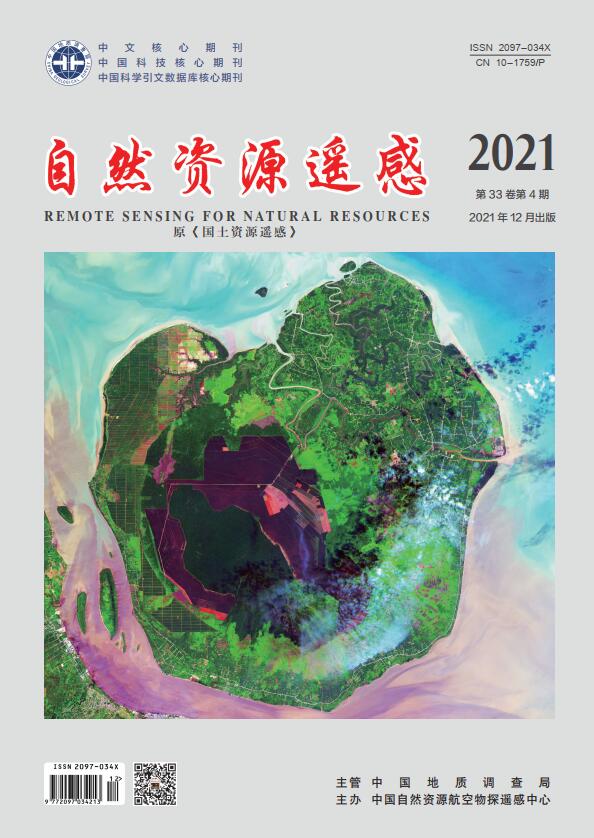| [1] |
匡文慧, 杨天荣, 刘爱琳, 等. 城市地表覆盖结构组分与热环境调控模型(EcoCity)研究——以北京城市为例[J]. 中国科学(地球科学), 2017,47(7):847-859.
Google Scholar
|
| [2] |
Kuang W H, Yang T R, Liu A L, et al. An EcoCity model for regulating urban land cover structure and thermal environment:Taking Beijing as an example[J]. Science China Earth Sciences, 2017,47(7):847-859.
Google Scholar
|
| [3] |
Xu H Q, Wang M Y, Shi T T, et al. Prediction of ecological effects of potential population and impervious surface increases using a remote sensing based ecological index(RSEI)[J]. Ecological Indicators, 2018,93:730-740.
Google Scholar
|
| [4] |
Croft-White M V, Cvetkovic M, Rokitnicki-Wojcik D, et al. A shoreline divided:Twelve-year water quality and land cover trends in Lake Ontario coastal wetlands[J]. Journal of Great Lakes Research, 2017,43(6):1005-1015.
Google Scholar
|
| [5] |
United Nations. State of the world population 2014-the power of 1.8 billion:Adolescents,youth and the transformation of the future[EB/OL]. https://reliefweb.int/report/world/state-world-population-2014-power-18-billion-adolescents-youth-and-transformation.
Google Scholar
|
| [6] |
Meng F, Shan B Y, Liu M. Remote-sensing evaluation of the relationship between urban heat islands and urban biophysical descriptors in Jinan,China[J]. Journal of Applied Remote Sensing, 2014,8(1):083693.
Google Scholar
|
| [7] |
葛荣凤, 王京丽, 张力小, 等. 北京市城市化进程中热环境响应[J]. 生态学报, 2016,36(19):6040-6049.
Google Scholar
|
| [8] |
Ge R F, Wang J L, Zhang L X, et al. Impacts of urbanization on the urban thermal environment in Beijing[J]. Acta Ecologica Sinica, 2016,36(19):6040-6049.
Google Scholar
|
| [9] |
Feyisa G L, Meilby H, Jenerette G D, et al. Locally optimized separability enhancement indices for urban land cover mapping:Exploring thermal environmental consequences of rapid urbanization in Addis Ababa,Ethiopia[J]. Remote Sensing of Environment, 2016,175:14-31.
Google Scholar
|
| [10] |
Weng Q H, Lu D S. A sub-pixel analysis of urbanization effect on land surface temperature and its interplay with impervious surface and vegetation coverage in Indianapolis,United States[J]. International Journal of Applied Earth Observation and Geoinformation, 2008,10(1):68-83.
Google Scholar
|
| [11] |
Zheng B J, Myint S W, Fan C. Spatial configuration of anthropogenic land cover impacts on urban warming[J]. Landscape and Urban Planning, 2014,130:104-111.
Google Scholar
|
| [12] |
Chen Y J, Yu S X. Impacts of urban landscape patterns on urban thermal variations in Guangzhou,China[J]. International Journal of Applied Earth Observation and Geoinformation, 2017,54:65-71.
Google Scholar
|
| [13] |
Kotharkar R, Bagade A. Evaluating urban heat island in the critical local climate zones of an Indian city[J]. Landscape and Urban Planning, 2018,169:92-104.
Google Scholar
|
| [14] |
中国国家统计局. 中国统计年鉴(2015年)[M]. 北京: 中国统计出版社, 2016.
Google Scholar
|
| [15] |
National Bureau of Statistics of China. China statistical yearbook[M]. Beijing: China Statistics Press, 2016.
Google Scholar
|
| [16] |
United Nations. World population prospects:The 2018 revision[EB/OL]. https://population.un.org/wup/Publications/.
Google Scholar
|
| [17] |
中国住房和城乡建设部. 中国城市建设统计年鉴2014[M]. 北京: 中国统计出版社, 2015.
Google Scholar
|
| [18] |
Ministry of Housing and Urban-Rural Development of the People's Republic of China. China urban construction statistical yearbook[M]. Beijing: China Statistics Press, 2015.
Google Scholar
|
| [19] |
Van de Voorde T, Jacquet W, Canters F. Mapping form and function in urban areas:An approach based on urban metrics and continuous impervious surface data[J]. Landscape and Urban Planning, 2011,102(3):143-155.
Google Scholar
|
| [20] |
Chander G, Markham B L, Helder D L. Summary of current radiometric calibration coefficients for Landsat MSS,TM,ETM+,and EO-1 ALI sensors[J]. Remote Sensing of Environment, 2009,113(5):893-903.
Google Scholar
|
| [21] |
Charvz Jr P S. Image-based atmospheric corrections-revisited and revised[J]. Photogrammetric Engineering and Remote Sensing, 1996,62(9):1025-1036.
Google Scholar
|
| [22] |
Jiménez-Muñoz J C, Cristobal J, Sobrino J A, et al. Revision of the single-channel algorithm for land surface temperature retrieval from Landsat thermal-infrared data[J]. IEEE Transactions on Geoscience and Remote Sensing, 2009,47(1):339-349.
Google Scholar
|
| [23] |
Jiménez-Muñoz J C, Sobrino J A. A generalized single-channel method for retrieving land surface temperature from remote sensing data[J]. Journal of Geophysical Research Atmospheres, 2003,108(D22):4688.
Google Scholar
|
| [24] |
Jiménez-Muñoz J C, Sobrino J A, Skoković D, et al. Land surface temperature retrieval methods from Landsat8 thermal infrared sensor data[J]. IEEE Geoscience and Remote Sensing Letters, 2014,11(10):1840-1843.
Google Scholar
|
| [25] |
徐涵秋, 陈本清. 不同时相的遥感热红外图像在研究城市热岛变化中的处理方法[J]. 遥感技术与应用, 2003,18(3):129-133.
Google Scholar
|
| [26] |
Xu H Q, Chen B Q. An image processing technique for the study of urban heat island changes using different seasonal remote sensing data[J]. Remote Sensing Technology and Application, 2003,18(3):129-133.
Google Scholar
|
| [27] |
国家环保部. 生态环境状况评价技术规范(发布稿)[S]. 北京: 中国标准出版社, 2015.
Google Scholar
|
| [28] |
Ministry of Ecology and Environment the People's Republic of China. Technical criterion for ecosystem status evaluation[S]. Beijing: Standards Press of China, 2015.
Google Scholar
|
| [29] |
住房城乡建设部. 城市生态建设环境绩效评估导则(试行)[M]. 北京: 中国建筑工业出版社, 2015.
Google Scholar
|
| [30] |
Ministry of Housing and Urban-Rural Development of the People's Republic of China. Guidelines for performance assessment of urban ecological construction[M]. Beijing: China Architecture and Building Press, 2015.
Google Scholar
|
| [31] |
樊智宇, 詹庆明, 刘慧民, 等. 武汉市夏季城市热岛与不透水面增温强度时空分布[J]. 地球信息科学学报, 2019,21(2):226-235.
Google Scholar
|
| [32] |
Fan Z Y, Zhan Q M, Liu H M, et al. Spatial-temporal distribution of urban heat island and the heating effect of impervious surface in summer in Wuhan[J]. Journal of Geo-Information Science, 2019,21(2):226-235.
Google Scholar
|
| [33] |
Breiman L. Random forests[J]. Machine Learning, 2001,45(1):5-32.
Google Scholar
|
| [34] |
Du P J, Samat A, Waske B, et al. Random forest and rotation forest for fully polarized SAR image classification using polarimetric and spatial features[J]. ISPRS Journal of Photogrammetry and Remote Sensing, 2015,105:38-53.
Google Scholar
|
| [35] |
Padmanaban R, Bhowmik A K, Cabral P. A remote sensing approach to environmental monitoring in a reclaimed mine area[J]. ISPRS International Journal of Geo-Information, 2017,6(12):401.
Google Scholar
|
| [36] |
Schneider A. Monitoring land cover change in urban and peri-urban areas using dense time stacks of Landsat satellite data and a data mining approach[J]. Remote Sensing of Environment, 2012,124:689-704. |






 DownLoad:
DownLoad: